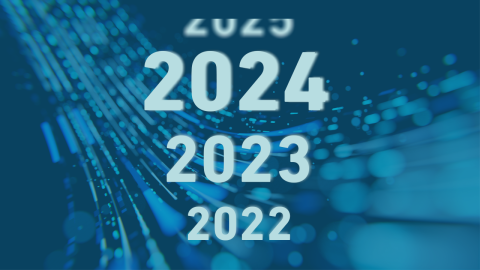Data center capacities are expanding rapidly, and organizations are increasingly using hybrid IT to meet rising demand. However, the growing complexity of IT environments is exposing limitations to current approaches.
filters
Explore All Topics
Industry stakeholders recognize that to truly understand IT infrastructure efficiency, data center operators need to report a facility work per unit of energy metric. Most operators are, however, unprepared to calculate this metric.
Preliminary calculations by Uptime Intelligence suggest the initial impact of generative AI on global data center power use is low — but it will rise quickly as adoption increases. How far generative AI will go remains unclear.
Data center budgets are expected to increase in 2024 for most organizations, but ongoing supply chain issues and staffing challenges may restrict investments, according to recent Uptime Intelligence survey data.
Our analysis suggests Uptime Intelligence’s yearly data center predictions since 2022 continue to be relevant and merit attention going into 2024.
Large colocation and public cloud companies have been growing strongly and very publicly, but enterprises continue to add data center capacity too, Uptime Intelligence data shows.
Results from the Uptime Institute IT and Power Efficiency Survey 2023 suggest that many organizations may struggle to meet regulatory requirements for energy, carbon and IT life cycle tracking.
This report explains the nuances of using energy consumption, energy attribute certificates and emissions factor data to calculate the use of renewable energy and carbon-free energy, and a Scope 1 and 2 emissions inventory.
Gigantic “gigawatt” data center campuses are being proposed or planned in many locations around the world. They could change the digital infrastructure landscape, but many questions — including how many will be built — remain.
This session describes the questions organizations need to answer around technology roadmaps, market growth and workload requirements to effectively plan the data center builds of the near future.
The Uptime Institute Global Data Center Survey 2023 provided insights and site data from owners and operators globally. The findings from North America reveal key differences in the areas of staffing, energy, cloud and AI.
Unpredictable costs and “bill shocks” are a growing problem for organizations running their applications and workloads in the public cloud. FinOps could help enterprises analyze, report and optimize cloud and other IT costs.
Reserved instances are a pricing model for virtual machines offered by cloud providers. As they offer savings of up to 70% compared with on-demand pricing, organizations should use them liberally, especially in challenging times.
As part of the Uptime Institute Global Data Center Survey 2023, data center equipment vendors and consultants were asked about customer spending, supply chains and DCIM adoption. This report highlights the key findings.
Recent publication of the EU Energy Efficiency Directive Task B and C reports clarify most of the data reporting requirements and set out the preferred policy options for assessing data center energy performance.
 John O'Brien
John O'Brien
 Douglas Donnellan
Douglas Donnellan

 Jay Dietrich
Jay Dietrich

 Andy Lawrence
Andy Lawrence
 Daniel Bizo
Daniel Bizo







 Todd Traver
Todd Traver
 Antonio Piraino
Antonio Piraino



 Owen Rogers
Owen Rogers


